This Is Why Every Galaxy Doesn’t Have The Same Amount Of Dark Matter

Some galaxies might not have any dark matter. Here’s why you should care.
There are two assumptions that everyone makes about the Universe for extremely good reasons, but they might not necessarily be true. The first is that the laws of physics that govern the Universe are the same everywhere and at all times. The second is that the Universe was born with roughly the same properties everywhere. The full suite of observations that we’ve taken — of stars, galaxies, gas, plasma, dust, and all forms of light — are consistent with these two assumptions being true, but we cannot know for sure.
But even being governed by the same laws and starting with the same ingredients doesn’t necessarily mean that everything we wind up with today will be similar. The Universe is a messy place, filled with both normal matter capable of forming stars, dark matter that only gravitates, and it has nearly 14 billion years to evolve. There may be 2 trillion galaxies in our observable Universe, but they’re not all the same. Here’s the story of how.
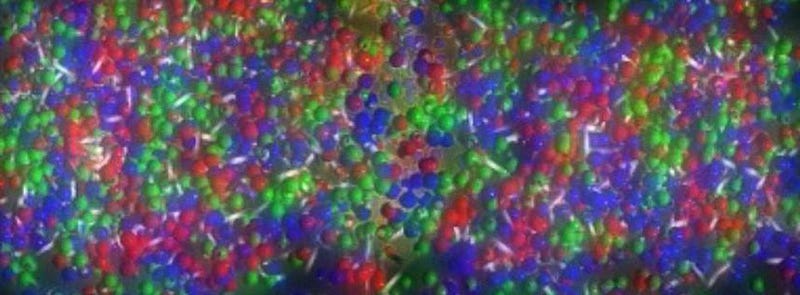
Imagine the Universe as it might have been in its earliest stages, shortly after the Big Bang. It’s hot, it’s dense, and it’s almost perfectly uniform. Everywhere you look, it’s filled with particles and radiation in almost identical amounts, with variations at just the ~0.003% level. Although the matter within the Universe experiences gravitational attraction, the intensity of the radiation prevents the overdense regions from growing in any sort of substantial way.
But this changes with time, because the hot, dense, uniform Universe is also expanding and cooling. It gets less dense, but more importantly, the radiation within it drops in energy, which means it gets less good at resisting the gravitational collapse of matter. Over time, the initial density fluctuations grow, accrue enough matter, and begin forming stars and galaxies.
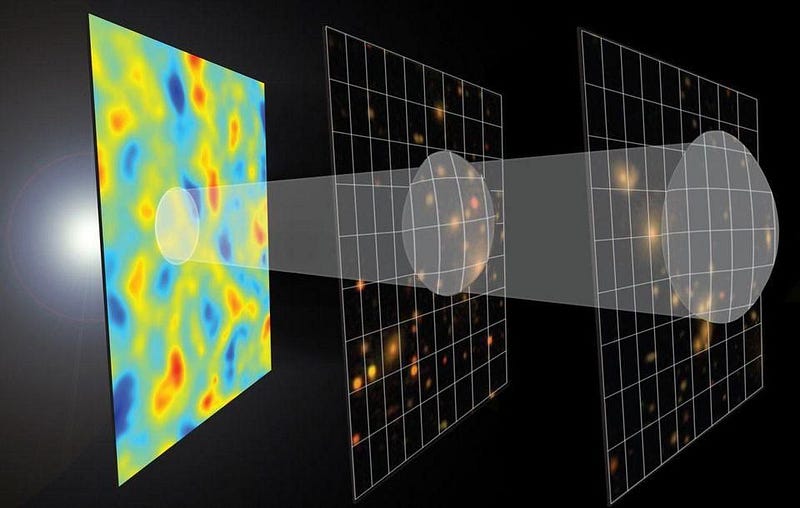
This is where the fun starts. Now, we’ve got young, early galaxies with a wide variety of masses. The smallest ones might only have a few hundred thousand solar masses to their name, while the ones that grow to be the largest contain trillions or even quadrillions of solar masses. All across the entire Universe, every one of these galaxies starts off with the same ratio of dark matter to normal matter as everything else: roughly 5-to-1.
But it doesn’t remain this way. You see, galaxies do something of the utmost importance: they form stars. It’s only the normal matter that forms stars, because only normal matter can interact with either itself (through collisions) or radiation (through various types of scattering). While both normal matter and dark matter experience gravity, only normal matter experiences the other fundamental forces.

When stars begin to form, three extraordinary things happen, both of which we normally take for granted.
- The new stars produce large amounts of radiation, particularly ultraviolet radiation, which can interact with all the normal matter (but not the dark matter) in its surroundings.
- Many of the young stars will have strong stellar winds, which can impart large amounts of energy to the normal matter (but not the dark matter) around them.
- The most massive among the new stars will eventually go supernova, causing a tremendous release of energy which, again, only gets absorbed by the normal matter, not the dark matter.
While the normal matter can absorb large amounts of this released energy, the dark matter cannot. In fact, the only changes that should happen to the dark matter are from its response to an altered gravitational potential, driven by the change in the distribution of normal matter.
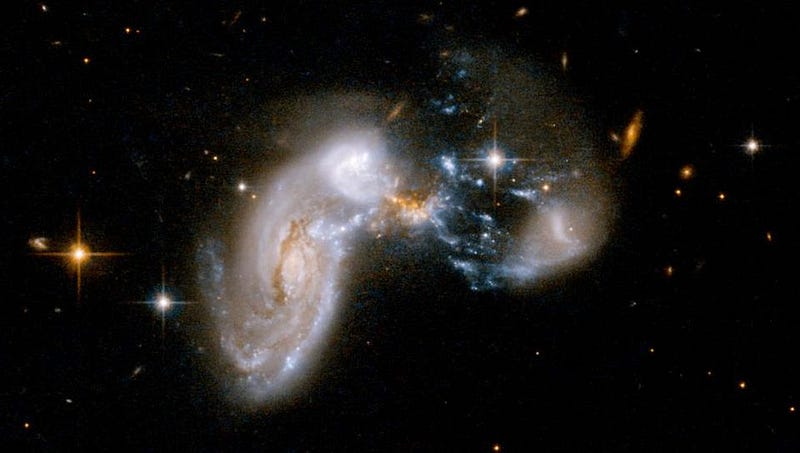
The important point to remember is that while gravity affects both normal matter and dark matter, all the non-gravitational interactions that occur only affect the normal matter. When stars form, burn through their fuel, emit winds, or go supernova, that can transfer energy from the stars to the normal matter in the surrounding environment, but none of that energy goes into the dark matter.
For large, massive galaxies, there’s so much matter (both normal and dark) around that even for the largest, most energetic cataclysms, these galaxies can hold onto all of their normal matter. But as we look to smaller galaxies that have experienced substantial amounts of star formation in their past, only the dark matter remains. Most of the normal matter, owing to these interactions and feedbacks, can get expelled.
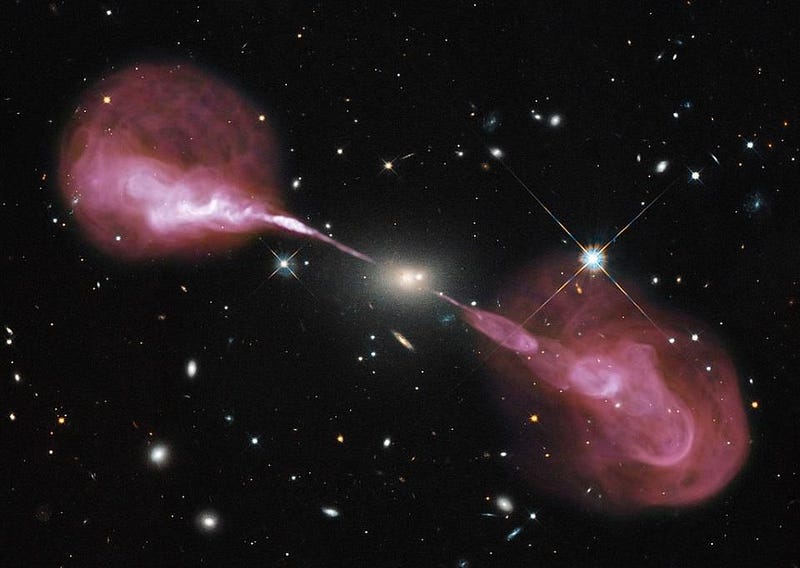
When we look at the galaxies in the Universe that are low in mass, such as dwarf galaxies, we are seeing what’s left of them. While they likely all began life with that 5-to-1 ratio of dark matter to normal matter, even a light episode of star formation can be enough to expel vast quantities of normal matter from them.
Ratios of 20-to-1 are common when you get down to just a few million solar masses, and the lowest-mass dwarf galaxies frequently have up to 100 times more dark matter than normal matter. At the most extreme end, there are galaxies so faint that they contain only a few thousand stars in total, with practically no remaining gas or other sources of normal matter. Segue 3, in particular, has a dark matter to normal matter ratio estimated at 600-to-1.
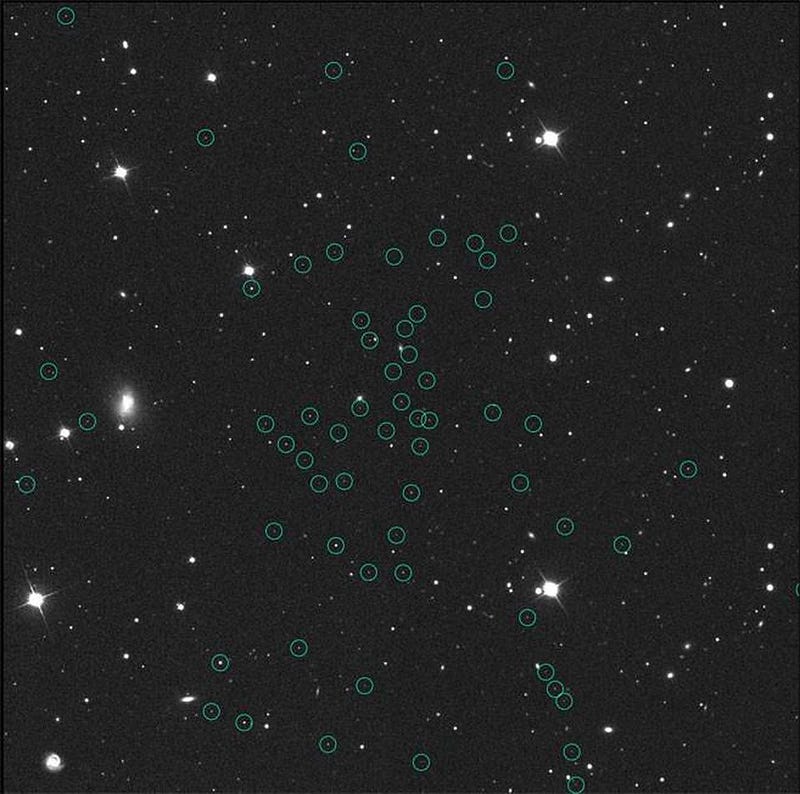
But when large galaxies interact, collide, or simply pass near one another, there can be disruptions between the balance of normal matter and dark matter inside of them as well. There are numerous mechanisms that we’ve observed where this occurs.
When galaxies speed through a rich cluster of galaxies, there’s intergalactic gas that they slam into. At high enough speeds, this can not only trigger star formation events, but it can actually strip the gas right out of the traveling galaxy. When galaxies merge together, large amounts of material (i.e., normal matter) can get accelerated and ejected; these ejection jets are often visible in many different wavelengths of light. Interacting galaxies also exert tidal forces on one another, causing internal gas to be pulled out of one (or both) galaxies. Meanwhile, active galaxies — possessing supermassive black holes — can eject substantial amounts of material.
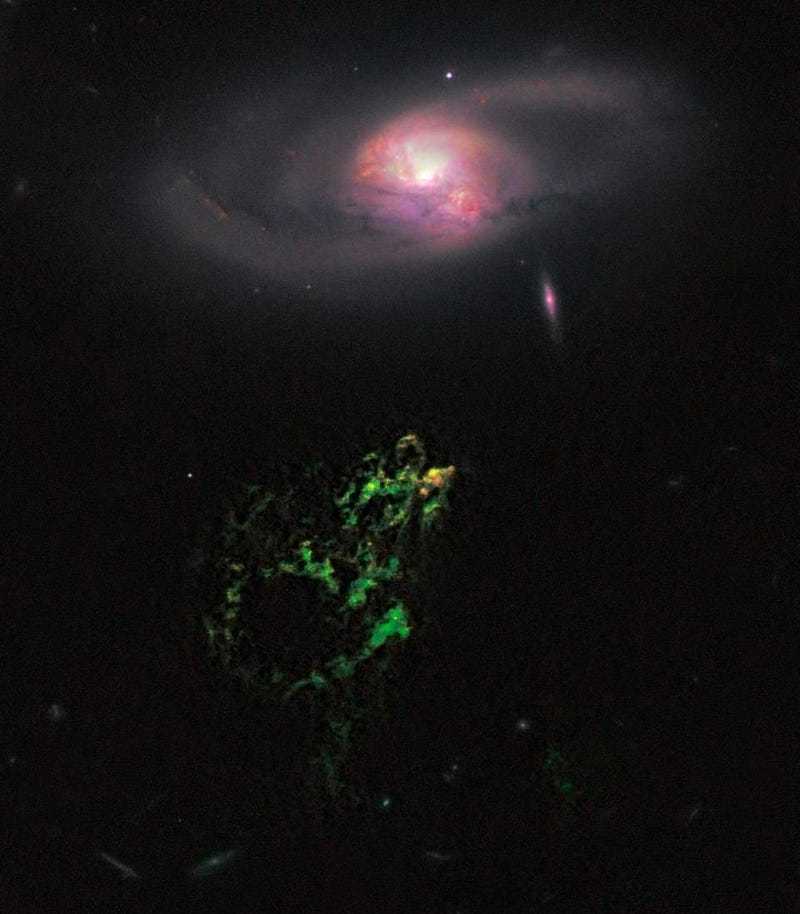
All of these methods are capable of removing normal matter from galaxies, and increasing that dark matter to normal matter ratio. But, if you’re clever, you’ve probably already realized something else that can occur: you should be able to form galaxies that are either low in dark matter, or contain no dark matter at all.
Why’s that? Because when you strip normal matter out of a galaxy, it can become its own entity. The matter can self-gravitate, forming its own dwarf galaxy, either with a reduced amount of dark matter from that standard 5-to-1 ratio, or potentially — if the separation of normal matter and dark matter is perfect — with no dark matter at all. In perhaps a fascinatingly ironic twist, the discovery of a galaxy with no dark matter would empirically prove the existence of dark matter. Only if there are two types of matter (normal and dark) that obey different rules can you produce a dark matter-free galaxy.
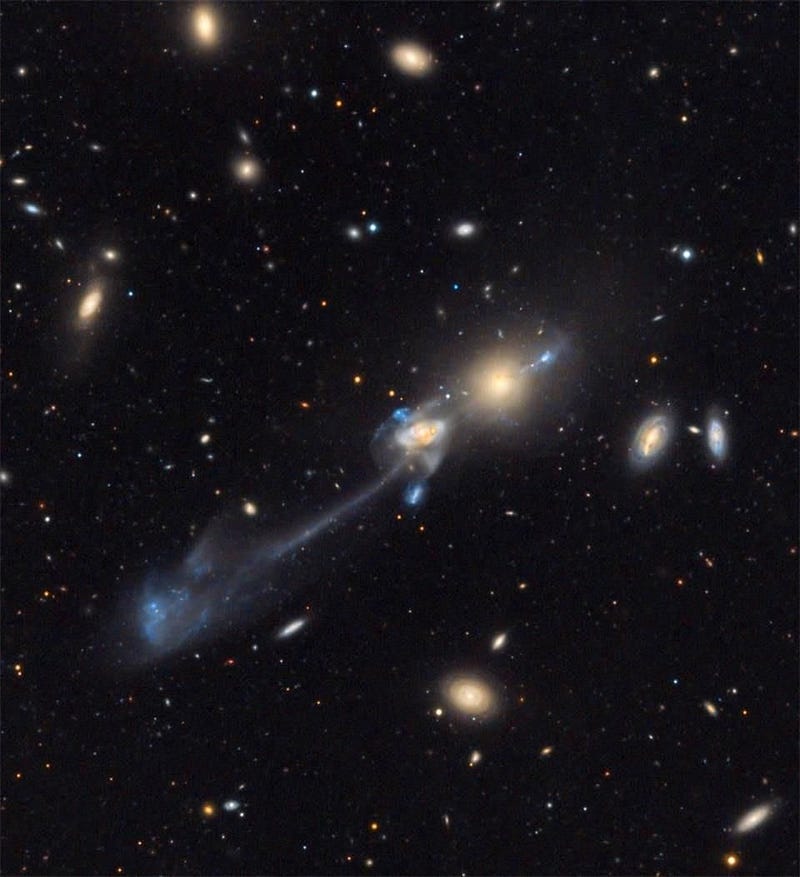
The big question, of course, is where are these galaxies without dark matter? Because they only form in environments that also contain much larger, more massive galaxies, they may not live for very long. The majority of galactic interactions and mergers have already occurred long ago in the Universe’s past, billions of years prior to the present day. As soon as a large galaxy pulls these dark matter-free galaxies back into them, they’ll cease to exist.
At the same time, they’re incredibly difficult to find, since they must be intrinsically faint and contain relatively few stars. You’ll never find a Milky Way-like galaxy without dark matter; only the small, dwarf-like galaxies even admit this as a possibility. If the majority of these dark matter-free dwarfs formed some 8–9 billion years ago, there may not be any left today.
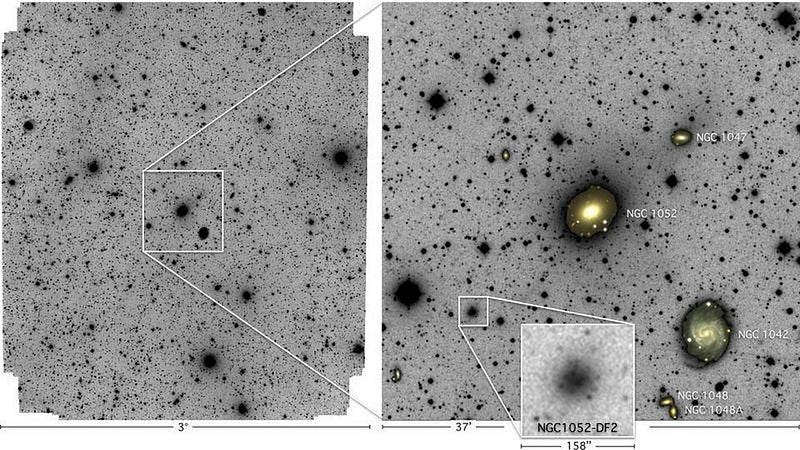
But there also might be! Right now, our astronomical techniques and technology has just advanced to the point where the identification of galaxies without dark matter might be possible. In an extremely controversial but fascinating claim, there are two galaxies, NGC 1052-DF2 and NGC 1052-DF4, that are candidates for being dark matter-free.
However, there are more observations that must be performed before we know for certain. It’s extremely difficult to pin down a definitive distance for these galaxies, or to measure the mass distribution inside them, as they’re both small and distant: somewhere between 40 and 70 million light-years away. If the closer estimates are correct and the dark matter distribution is core-like (instead of cusp-like), these might just be normal dwarf galaxies, with completely generic amounts of dark matter.
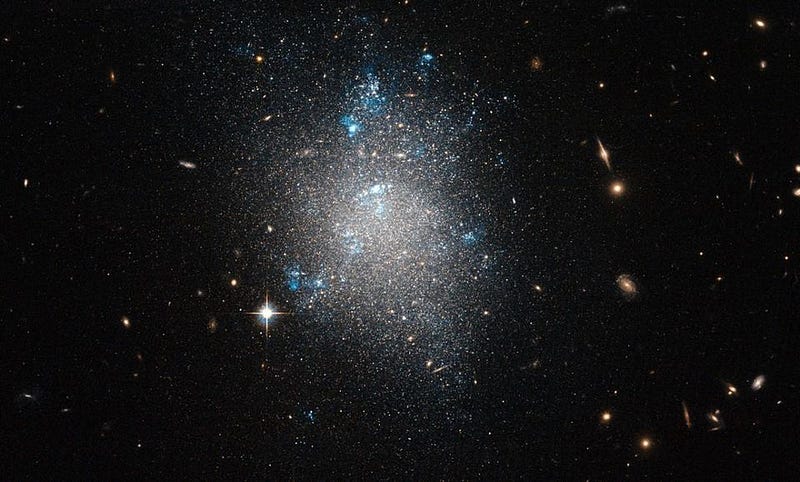
It isn’t the properties of one or two galaxies that will be the ultimate test of dark matter, however. Whether these galaxies are generic dwarf galaxies or our first examples of dark matter-free galaxies isn’t the point; the point is that there are hundreds of billions of these dwarf galaxies out there that are presently below the limits of what’s observable, detectable, or having their properties measured. When we get there, especially in the distant Universe and in post-interaction environments, we can fully expect to truly find this yet-unconfirmed population of galaxies.
If dark matter is real, it must be separable from normal matter, and that works both ways. We’ve already found the dark matter-rich galaxies out there, as well as isolated intergalactic plasma. But dark matter-free galaxies? They might be right around the corner, and this is why everybody is so excited!
Ethan Siegel is the author of Beyond the Galaxy and Treknology. You can pre-order his third book, currently in development: the Encyclopaedia Cosmologica.





